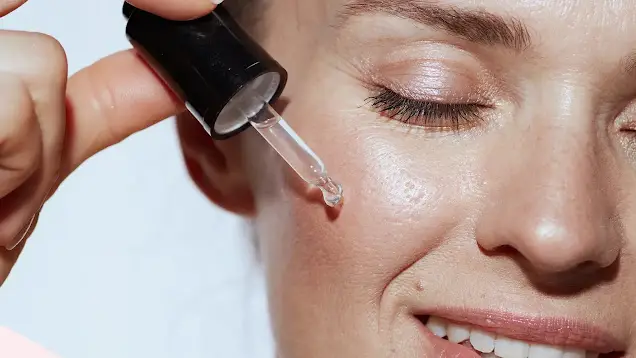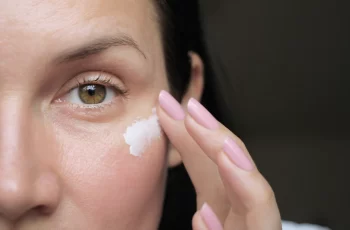
Can Niacinamide and Retinol be mixed?
Believe it or not, these two powerhouses can not only be mixed, but they are also considered a very effective skincare combination. But don’t just take my word for it, many dermatologists and skin experts recommend combining Niacinamide and Retinol in your daily skincare routine for the best results.
As with any skincare layering, sometimes people are a little confused about how to go about it. If this applies to you, look no further because everything will become much clearer.
Before I get into the details of how to mix these ingredients, let me first give you a refresher course on the benefits you can expect when using these ingredients in your daily skincare routine.
What is Niacinamide?
Niacinamide is a form of vitamin B3 that occurs naturally in the body, but can also provide many skin benefits when applied topically to the skin. Here are some of the things you can expect when using Niacinamide.
Fights signs of aging like fine lines and wrinkles
Reduces frequent acne attacks and breakouts
Soothes skin for dry skin conditions like rosacea and atopic dermatitis
Repairs signs of sun damage and hyperpigmentation
Gives skin an overall plump appearance
What is Retinol?
Known as one of the most powerful ingredients in skincare, retinol is a form of vitamin A that has a reputation for its impressive skin-fighting abilities as well as reducing blemishes and acne breakouts. Some others
Speeds up the skin cell cycle, ensuring a radiant complexion
Reduces the appearance of premature aging like fine lines and wrinkles
Fights uneven skin tone and hyperpigmentation
Regulates the skin’s natural sebum production
How soon after using Niacinamide can you apply Retinol?
Niacinamide and Retinol work so well together that you can rest for 5 minutes between applications without having to worry about your skin being irritated or showing signs of redness. If you want to use a more time-saving product, there are a range of effective products that you can buy online or at your local store.
What can’t be mixed with Niacinamide?
Niacinamide is one of the few skin ingredients that can be used by almost all skin types. Because niacinamide contains hydrating properties, it can draw water into the skin and trap it in the underlying layers. This also means that it generally works well with many different skin ingredients. However, some outdated research from the 1960s recommended against using niacinamide and vitamin C at the same time. Since the old form of vitamin C was so unstable, it was believed that using niacinamide and vitamin C together would have opposite effects, as both would have similar effects on the skin. This often resulted in them competing with each other and preventing each from achieving their own strengths.
What Should Not Be Mixed With Retinol?
There are several powerful ingredients that should not be used at the same time as retinol. However, this does not mean that you should not use these ingredients together in your daily routine. Simply alternate between them to reap the benefits and maintain a radiant, healthy complexion.
Ingredients That Should Not Be Mixed With Retinol
Vitamin C
Ideally, you should use vitamin C in your morning routine to take advantage of its antioxidant properties to repair and regenerate your skin. Follow your nightly routine with retinol to boost collagen production for a rejuvenated complexion.
Benzoyl Peroxide
Benzoyl peroxide and retinol counteract each other, so it doesn’t make sense to use both at the same time. Instead, it’s considered best to alternate between each ingredient throughout the week.
AHAs and BHAs
Both chemical peels can increase skin sensitivity, leading to redness, irritation, and dryness. Just remember not to overuse these ingredients, especially if you have retinol in your routine, to avoid unwanted side effects.
Remember, if you have any questions about using ingredients on your skin, it’s best to consult a doctor, dermatologist, or trained medical professional to ensure that you and your skin will benefit from incorporating these ingredients into your skin care routine.
Should I use niacinamide before or after retinol?
There are several formulas that actually contain both ingredients, which is considered ideal for those who are pressed for time. If you want to use each ingredient in separate products, I recommend using niacinamide first, followed by retinol. By using niacinamide first, you protect your skin’s natural barrier from free radical damage caused by aggressors such as pollution, UV rays, and harsh climates.
How long does it take for Niacinamide to work?
You will notice a noticeable improvement in the appearance of your skin, which will look more hydrated and healthy after use. For long-term results, consistency is key. If you continue to use products containing 5% Niacinamide, you will see noticeable improvements after 8-12 weeks. After this time, your skin will be more plump, signs of aging and dehydration will be significantly reduced, and natural sebum production will be regulated.
Can I use Niacinamide every day?
Of course, you can use it twice a day, morning and night. This means that your skin barrier remains fully functional with the help of the right amount of water and can fight off damage caused by free radicals. Once you reapply this clever moisturizer as part of your evening routine, you will find that all the damage done during the day has been repaired. Any other products you apply to your skin will be absorbed quickly, so they can all work while you get your beauty sleep.
How do I know if Retinol is working?
Generally speaking, it takes a few weeks for your skin to develop a tolerance to this powerful powerhouse. A common side effect of using Retinol is temporary flaking and dryness of the skin, which may last for the first few weeks. After the first few weeks, you’ll notice a dramatic improvement in the overall look, feel, and texture of your complexion.If you want to learn more about incorporating retinol into your skincare routine and finding the best type of retinol, check out our blog post.
Don’t forget to follow us on Instagram for daily skincare tips, exclusive discounts, and product launches.


